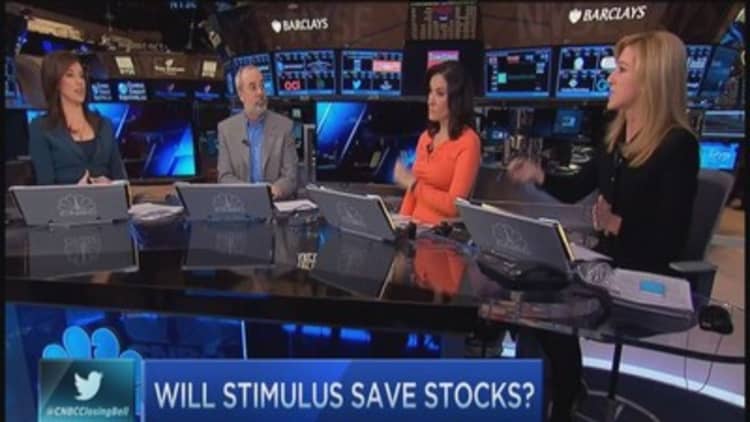
The markets have already priced in the quantitative easing that the European Central Bank is expected to do next week and he doesn't think it will be very powerful, David Malpass, president of Encima Global, told CNBC Wednesday.
Therefore, he believes the markets are entering a phase of global rebalancing.
"People will get tired of just being in the U.S. and will take a look at some of the emerging markets, oil, the euro and so on," Malpass said in an interview with "Closing Bell."
David Hale, chairman of David Hale Global Economics, agrees the market has been discounting the anticipated QE for several weeks.
"Bond yields in Europe are at record low levels. Leaving aside the last few days, stock markets have been resilient. So I do think the expectation of this happening is now broadly in the market because of both comments by [ECB President Mario] Draghi and other members of the monetary policy council."
The European Central Bank meets next Thursday, and Draghi has said the bank is ready to start full-blown quantitative easing.
Read MoreECB QE needs to buy shares and bonds: Generali
Hale expects a "decent" amount of QE but said he doesn't think it will work well enough to be stimulative.
"The bond yields are already low, and remember the ECB is going to finance all those bond purchases with bank financing," he said. "In the U.S., 18 percent of bank assets are stuck at the Fed, dead money. So it's not really a good move for Europe that's going to cause stimulus."
Malpass thinks the stimulus will be $500 billion euros.
"The primary impact will come through a falling currency," he said.
He thinks the euro could drop to 1.1 against the U.S. dollar and "if things get bad enough going out six months or nine months, it might even be parity with the U.S. dollar."
Read MoreSo bad it's good: Why it may be time to buy the euro


